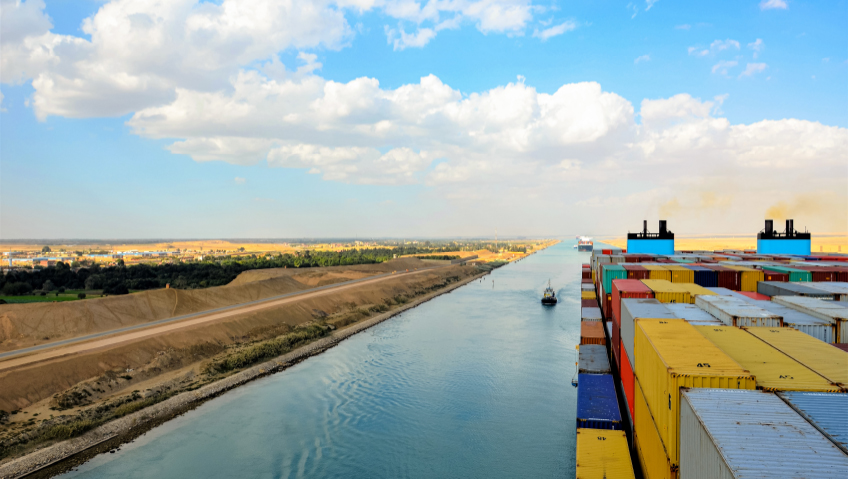The Silk Road, which linked China, Western Asia, Persia, Central Asia and Europe, is an early example of a supply chain, used to transport jade and bronze, and later precious Chinese cloth. Much like spice trade routes, this supply chain saw products like black pepper, cinnamon, turmeric and star anise travel thousands of miles before reaching their final destination. It is interesting to consider how challenges of logistics have been so deeply ingrained in our society.
In simple terms, supply chains are networks or systems between companies and suppliers created to provide products or services to consumers. This requires taking raw materials or components and transforming them into finished products, which are then delivered to buyers. Involving different people and resources along the way, suppliers are usually ranked and organized by tiers. To be successful, this requires supply chain management, which co-ordinates the process from sourcing to transportation, making it as efficient as possible.
Thanks to improved shipping technologies in the 18th century, supply chains became large-scale global enterprises, transporting sugarcane molasses from India to New England, where it was distilled into rum, much of it transported to Europe for sale. This was soon followed by the Industrial Revolution and the need to move raw materials like cotton to make textiles, and the construction years later of major railway lines, steamships, telecommunications and the Suez Canal to facilitate mass manufacturing.
Later, major innovations, including containerization in the 1950s, saw goods being transported more efficiently than ever before. And in the coming decades, both ships and ports became much larger, and able to move and process more products faster than ever. Efficiency increased profit, and that was the driving forces of change in the industry. Today, however, the equation is not so simple.
The triple bottom line
In recent years, companies have been pressured by workers, customers, and governments worldwide to take greater responsibility for their part in supply chain sustainability. More than supply chains of the past which involved mainly transporting goods, sustainable supply chains encompass the entire process from start to end-of-life cycle, measuring the environmental and societal impact at every stage.
Large businesses, and their logistics networks, are increasingly under the microscope for several new factors, including waste generated and greater accountability for everything from sourcing raw materials to how they are stored, production and manufacturing methods, and modes of transportation. In an energy-conscious world, even factors once dismissed, like water consumption and the amount of waste generated are considered and evaluated under sustainable supply chains. Emphasizing not only the impact on the environment but also on society, supply chain sustainability encompasses fair labour, water security and the impact of deforestation, and other important global issues.
For businesses and people, the benefits that come from sustainable supply chains are many, and able to positively affect the Triple Bottom Line (TBL), namely profits, people, and our planet. Coined by British entrepreneur, author and specialist in sustainable development and corporate responsibility John Elkington, examples of large companies subscribing to TBL include Starbucks, LEGO, Mars, and Ben & Jerry’s, who emphasize fair trade certification of raw goods , reducing their carbon footprint, fair treatment of labourers, using renewable energy, and hiring veterans.
According to Investopedia.com, “In economics, the triple bottom line maintains that companies should commit to focusing as much on social and environmental concerns as they do on profits.” Applied directly to supply chain sustainability, Triple Bottom Line principles benefit businesses.
When companies, especially large entities, track supply chain management (SCM) systems, they validate to investors and the public alike that they are good corporate citizens, responsible and proactive. This can be achieved by applying environmental initiatives throughout supply chains, including using recycled packaging and materials, prioritizing renewable energy, and shipping goods to the nearest distribution centers to save fuel and reduce carbon emissions.
According to global management consulting firm McKinsey & Company, supply chains account for over 90 percent of the environmental impact of many consumer goods companies, a staggering figure. By better aligning themselves with suppliers, these companies can significantly reduce the impact they take on the environment and society.
As populations increase, so does consumer spending on everything from food to personal care products to clothing and electronics. All these products and many others can be better streamlined into sustainable supply chains, including where they are sourced, the ethical treatment and fair wages of providers and workers, how products are packed, and many other factors, including the type of energy used for shipping.
“The typical consumer company’s supply chain creates far greater social and environmental costs than its own operations, accounting for more than 80 percent of greenhouse-gas emissions and more than 90 percent of the impact on air, land, water, biodiversity, and geological resources,” stated McKinsey & Company in Starting at the source: Sustainability in supply chains. “Consumer companies can thus reduce those costs significantly by focusing on their supply chains.”
Time for change
Companies aligning themselves with sustainable supply chain initiatives not only reduce their overall impact on the environment and society, they also find new opportunities for growth. This ties into the rise of ethical investing – also called ‘socially responsible investing’ or ‘green investing,’ – where investors are increasingly putting their money into businesses aligning with their personal code of ethics. They are putting their money where their mouths are.
Although what is ‘ethical’ varies from person to person, it usually trends toward companies making a positive difference – such as how they use energy, and treatment of people, animals, and the environment. And this valuation now also extends to a company’s supply chains, regardless of who owns what under which umbrella – armed with software tools for analysis and the general transparency of information, investors are looking at the big picture.
Of course, sustainability in supply chains is a matter of accountability, above and beyond just attracting investors. From suppliers of raw materials to how and where products are made and distributed, this awareness drives accountability, and sweeping bad information under the rug is becoming more of a liability than ever.
About a decade ago, it was revealed some of the world’s biggest makers of athletic shoes and sportswear were working with suppliers in China who were dumping toxic chemicals into waterways, and a well-known computer company violated safety protocols by exposing workers to dangerous chemicals during the manufacturing of its phones. Events like this sully a company’s reputation, which can affect everything from the consumer choices to recruiting.
For supply chains to be truly sustainable, an end-to-end and beyond approach is needed. This involves not only accountability with how materials are sourced from tier suppliers, paying workers fairly, and how goods are shipped and sold, but also what happens to products when they reach their end-of-life states. Viewed for years as linear, many are now looking at supply chains as circular. Genuinely sustainable supply chains consider every stage of the process, including eventual recycling and minimizing waste.
While many companies accept the basics – recycling metal, plastic and paper – others are going beyond, restoring their used products, or finding solutions to ‘upcycle’ them into something else. This includes office used office furniture, with worn-out parts being replaced, and even redesigning clothing so that parts can be repaired, and the garment re-used.
It’s only logical: by purchasing materials closer to home, by ensuring fair compensation for workers, by minimizing transportation and reducing greenhouse gas emissions, and by repairing products at the end of their life cycles, sustainable supply chains are achievable and profitable.






